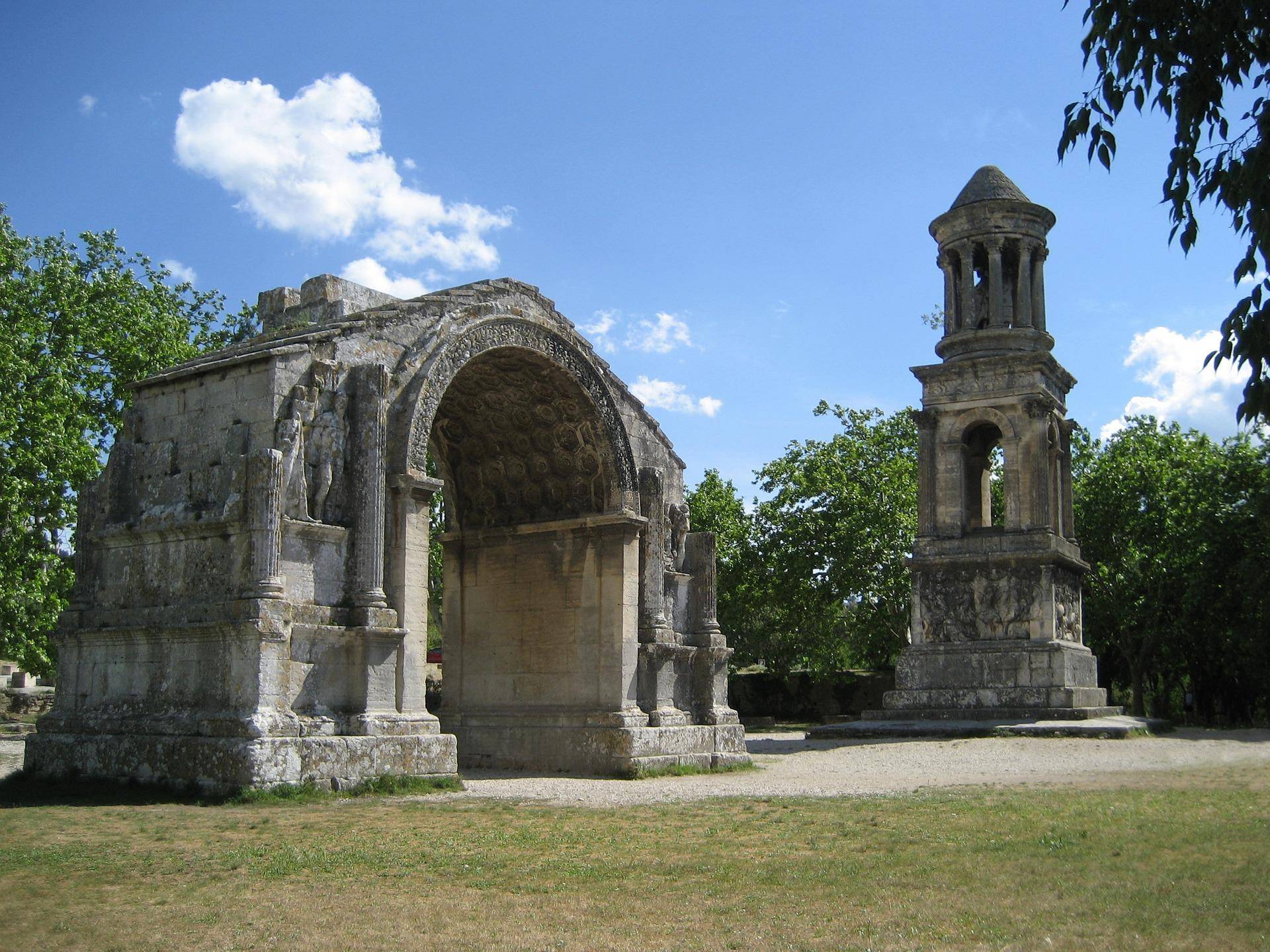
At the foot of the Alpilles, between olive groves and limestone hills, the past takes shape in stone. Just a few minutes’ walk from the center of Saint-Rémy-de-Provence, the majestic remains of Glanum and the Antiques invite you on a journey through time. Here, modern Provence meets its Gallo-Roman heritage, in a natural setting of rare beauty. Between thousand-year-old ruins, silent temples, and Mediterranean panoramas, this unique archaeological site reminds us that the Provençal art of living is also the fruit of a long history.
Founded in the 6th century BC by the Salyens — a Celto-Ligurian people — and later developed by the Romans from the 1st century BC, Glanum is a remarkable example of an ancient city harmoniously integrated into its landscape.
Nestled in a wooded valley, the city enjoyed a strategic location: at the crossroads of trade routes and at the foot of a sacred spring, which long gave it spiritual significance. The Romans built prestigious monuments, a sophisticated hydraulic system, and a well-structured urban layout, the remains of which are still visible today.
👉 Learn more: Glanum Official Website – Centre des monuments nationaux
Even before entering the site, two imposing monuments welcome you along the roadside: the Antiques, perfectly preserved for two millennia.
They include the Mausoleum of the Julii (dating from 30–20 BC) — one of the finest examples of Roman funerary architecture — and the Triumphal Arch of Glanum, built under the reign of Augustus.
Standing alone on an open esplanade, these two stone treasures are freely accessible at any time of day. They embody the grandeur of a civilization that left an indelible mark on Provence.
👉 More info: Arles Antique – Glanum and the Antiques
Walking through the streets of Glanum feels like stepping into a city frozen in time, yet surprisingly alive in its layout.
Highlights include:
- A forum, the political and commercial heart of the city,
- A temple dedicated to the Roman triad, with its soaring columns,
- Aristocratic houses, such as the House of Atys, with mosaics and atrium,
- A thermal district with an ingenious heating system,
- Lanes, fountains, and basins of rare sophistication.
Each stone tells a story, each wall an era, in a striking natural setting.
It was only at the end of the 19th century that Glanum was truly rediscovered, after having been buried for centuries under sediment. Excavations began in 1921, gradually revealing the different layers of the city, from its Celto-Ligurian origins to its Roman heyday.
Research continues today, and Glanum remains a living archaeological site, regularly enriched by new discoveries. The site is managed by the Centre des monuments nationaux, which ensures its preservation and promotion.
👉 Read the full report: INRAP – Scientific Dossier on Glanum
📍 **Access**: Route des Baux-de-Provence, 1 km from the center of Saint-Rémy
🚗 **Parking**: Free nearby (pedestrian access to the site)
🕒 **Hours**: Open daily except Monday; schedules vary by season
💶 **Fees**: €9.50 full price (free under 18, reduced rates available)
🎧 **Extras**: Audioguides and mobile apps available
📚 **Bookshop**: On-site shop with books, reproductions, and items inspired by Antiquity
👉 Practical info: Glanum – Hours & Tickets
Just next to Glanum lies another deeply moving site: the Saint-Paul de Mausole monastery, where Vincent van Gogh was interned between 1889 and 1890.
It was here that he painted his famous *Irises*, *The Starry Night*, and *Olive Trees*.
The visit to this peaceful place — with its cloister, gardens, and the reconstruction of the artist’s room — complements Glanum perfectly, weaving a delicate link between art, history, and the unique light of the Alpilles.
👉 Discover: Saint-Paul de Mausole
Roman ruins, Van Gogh’s asylum, lively Provençal markets — Saint-Rémy-de-Provence is a concentration of beauty, culture, and gentle living.
Living here means inhabiting a landscape: exploring an archaeological site in the morning, enjoying lunch under plane trees, and ending the day in your garden with the sound of cicadas.
Real estate in Saint-Rémy is rare and in high demand: Provençal mas, restored bastides, contemporary villas nestled in the garrigue… Exceptional opportunities await those wishing to invest in timeless Saint-Rémy-de-Provence.
👉 Browse properties for sale in the Alpilles with Agence des Alpilles and make history your everyday life.
This site is protected by reCAPTCHA and the Google Privacy Policy and Terms of Service apply.